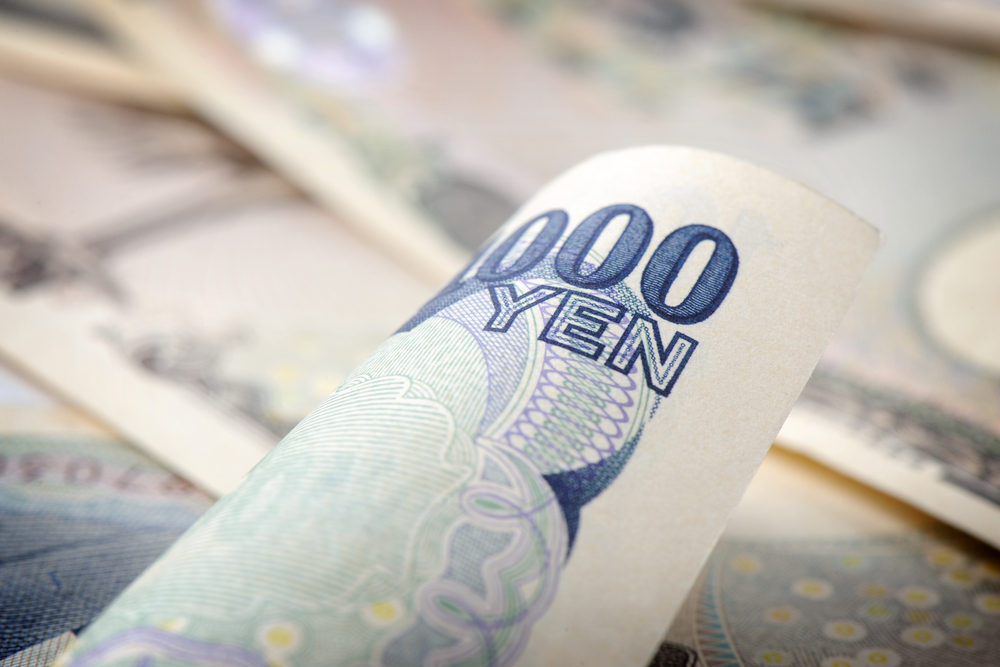

This article is only available to Macro Hive subscribers. Sign-up to receive world-class macro analysis with a daily curated newsletter, podcast, original content from award-winning researchers, cross market strategy, equity insights, trade ideas, crypto flow frameworks, academic paper summaries, explanation and analysis of market-moving events, community investor chat room, and more.
Summary
- USD/JPY has traded above 150 all week, closing above 152 for the first time since 30 July.
- Since troughing near 140 in mid-September, USD/JPY has rallied roughly 9%, with rising US yields as well as Japanese and US political the drivers.
- This has caught the Japanese Ministry of Finance (MoF)’s attention, whose top currency official verbally pushed back on JPY weakness last week.
Market Implications
- This verbal intervention puts the market on alert for MoF buying JPY.
- This plus a key technical indicator showing USD/JPY is overbought, means we prefer positioning for a downside reversal.
- However, we suggest patience and prefer scaling into a USD/JPY short slowly given political uncertainty.
USD/JPY on a Tear Since Mid-September
Since bottoming out near 140 on 16 September, USD/JPY has rallied sharply, trading above 152 for the past day or two.
This level was last seen in late July, and USD/JPY has largely been a virtual one-way bet over the past month despite choppy price action (Chart 1).
US Yield Spike a Big Driver of USD/JPY Upside
We argue the rise in US yields over the same period has been the primary driver of USD/JPY upside.
Since the US 2-year yield printed a two-year low on 25 September, the US rates market has sold off sharply with the 2-year yield now ~50bps higher than this time last month (Chart 2).
The same is true for the 10-year US yield, which is also up about 50bps over the same period (Chart 3).
We think the US yield rally has been the primary catalyst for USD/JPY to trade higher.
USD/JPY Rally Has Triggered MoF Verbal Intervention
When USD/JPY powered through 150 last week, Japan’s top currency official, Atsushi Mimura, said recent currency moves are ‘somewhat one-sided and rapid.’
Mimura added ‘we as Japanese authorities are closely watching foreign exchange moves, including speculative ones, with a high sense of urgency.’
While this does not necessarily mean MoF buying of JPY is imminent, it does heighten market expectations that Japanese officials are concerned about JPY weakness.
We can at least expect additional verbal intervention from Japanese officials, should JPY keep weakening.
And, given the MoF has intervened already this year, further material JPY weakness could prompt more JPY buying.
USD/JPY Technicals Appear Stretched
The recent USD/JPY rally has caused one key technical indicator, the Relative Strength Index (RSI), to stretch to the upside.
Specifically, the USD/JPY RSI now signals the pair is overbought. We like RSIs because they are a ubiquitous and simple technical indicator. By this, we mean the 30/70 rule.
When an RSI breaches 30 on the downside, the security is oversold. And, conversely, when an RSI breaches 70 on the upside, the security is overbought.
This week, the USD/JPY RSI printed above 70, and continues hovering near that level, indicating USD/JPY is overbought (Chart 4).
As a result, we think this increases the chance of a decline in USD/JPY.
Political Risk Also Driving USD/JPY Strength
Political risk in Japan and the US has also been a catalyst for USD/JPY upside in recent weeks.
Japanese Prime Minister Shigeru Ishiba, recently elected leader of the governing Liberal Democratic Party (LDP) in a narrow victory, called a snap election for 27 October.
Some polls show the governing coalition maintaining its majority, but a recent Asashi newspaper poll suggests otherwise, with the LDP projected to lose up to 50 of its 247 seats in the 465-seat lower House of Parliament.
We could enter a period of political uncertainty if the coalition cannot retain its majority, given the LDP has governed Japan for most of the post-war era.
This week’s potential political uncertainty has added impetus to the JPY downtrend.
In the US, odds of a Republican sweep in the Presidential and Congressional elections on 5 November have increased, causing a surge in USD/JPY and in the broader USD index (DXY, Chart 5).
We Favour USD/JPY Downside, Preferring a Cautious Approach
In the near term, the confluence of a USD/JPY rise, which triggered a verbal response from the Japanese MoF, together with overstretched technicals, means we think USD/JPY may be near topping out.
This becomes especially true if the MoF’s verbal intervention leads to the Japanese authorities buying JPY.
Yet, with elevated Japanese and US political risk, we prefer a cautious approach to building short USD/JPY exposure.
Rather than initiating a full short position at current levels, we prefer to scale into a bearish USD/JPY exposure in the coming days and weeks.
(The commentary contained in the above article does not constitute an offer or a solicitation, or a recommendation to implement or liquidate an investment or to carry out any other transaction. It should not be used as a basis for any investment decision or other decision. Any investment decision should be based on appropriate professional advice specific to your needs.)
Richard Jones writes about FX and rates markets for Macro Hive. He has traded and invested in interest rate and FX market portfolios spanning three decades, both on the buy-side and sell-side.
